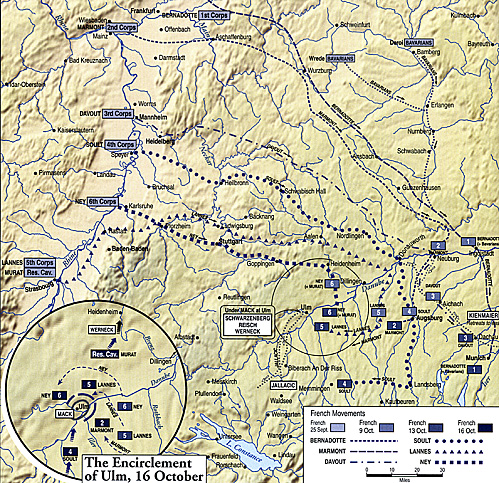"I have destroyed the enemy merely by marching," Napoleon said in 1805 at the end of his new Grande Armee's first campaign. The army was composed of six corps and a reserve cavalry corps, each under the command of a marshal. After marching nearly 20 miles per day, Napoleon discovered they had passed the Austrian concentration at Ulm under General Karl Friedrich Mack, and he ordered a 90-degree movement that rapidly trapped or later chased down almost 60,000 Austrians and forced their surrender.
The corps system and superbly trained veteran soldiers made this victory possible. As in the Ulm campaign, the corps would usually march within supporting distance -- ideally, a day or less away. A corps could fight effectively on its own with a good commander. For example, the 3rd Corps stopped an attack by almost 40,000 Austrians and Russians for four hours on the right wing of the battle of Austerlitz on 2 December 1805, with only Friant's division and one cavalry division from the reserve (Davout's own cavalry and two other divisions were en route or attached to other corps). Ten months later, Davout's full corps of 26,000 defeated more than 60,000 Prussians at the battle of Auerstadt (14 October 1806).

Back to Table of Contents -- Napoleon #17
Back to Napoleon List of Issues
Back to MagWeb Master Magazine List
© Copyright 2001 by Napoleon LLC.
This article appears in MagWeb (Magazine Web) on the Internet World Wide Web.
The full text and graphics from other military history magazines and gaming magazines are available at http://www.magweb.com
Order Napoleon magazine direct